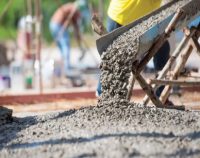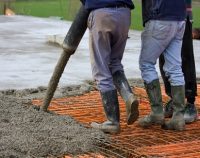Concrete Construction: 6 PDH
$36.00
Concrete is one of the most important construction materials. It is comparatively economical, easy to make, offers continuity and solidity, and will bond with other materials.
In this course the student will understand essentially all aspects of concrete construction including characteristics, mix design, formwork, joints, placement, finishing, and pre-cast. Instructor: Raymond Bosek, PE
SPECIFIC KNOWLEDGE OR SKILL OBTAINED
This course teaches the following specific knowledge and skills:
- Define characteristics of concrete
- Identify ingredients essential for good concrete
- Calculate concrete mix designs
- Determine methods and mixing times of concrete
- Describe the types of concrete forms and their construction
- Determine the types of ties for and placement of reinforcing steel
- Determine the location of construction joints
- Determine proper occasions for using the concrete saw
- Describe the proper procedures for placing concrete
- Describe the methods available for consolidating concrete
- Describe the finishing process for the final concrete surface
- Determine projects suitable for and lifting methods necessary for precast and tilt-up construction
CERTIFICATE OF COMPLETION
You will be able to immediately print a certificate of completion after passing a 21 question multiple-choice quiz. The quiz can be retaken unlimited times until a passing grade of 70% or better is earned. This course satisfies six professional development hours (PDH) of continuing education.
Related Courses
Internal Curing for Concrete Pavements: 1 PDH
$6.00 Add to cartIn this course the student will understand the concepts and benefits of internal curing for concrete pavements including mixture design, quality control, and studies of practical applications over the past two decades.Instructor: Raymond Bosek, PEIn this course the student will understand the concepts and benefits of internal curing for concrete pavements including mixture design, quality control, and studies of practical applications over the past two decades.SPECIFIC KNOWLEDGE OR SKILL OBTAINED
This course teaches the following specific knowledge and skills:
- Internally cured concrete pavement applications
- Mixture design
- Construction aspects
- Properties of internally cured concrete
- Practical applications
CERTIFICATE OF COMPLETION
You will be able to immediately print a certificate of completion after passing a 10 question multiple-choice quiz. The quiz can be retaken unlimited times until a passing grade of 70% or better is earned. This course satisfies one (1) professional development hour (PDH) of continuing education.
Preview CourseClick “Preview Course” to View Prior to PurchaseClick “Add to Cart” to Purchase and Access QuizFoundations in Expansive Soils: 6 PDH
$36.00 Add to cartThis course presents guidance and information for the geotechnical investigation necessary for the selection and design of foundations for heavy and light buildings constructed in expansive clay soil areas. The information in this course is generally applicable to many types of structures such as residences, warehouses, and multi-story buildings. Emphasis is given to the maintenance of an environment that encourages constant moisture conditions in the foundation soils during and following construction. Special attention must always be given to specific requirements of the structure such as limitations on allowable differential movement.Instructor: Raymond Bosek, PEThis course presents guidance and information for the geotechnical investigation necessary for the selection and design of foundations for heavy and light buildings constructed in expansive clay soil areas. The information in this course is generally applicable to many types of structures such as residences, warehouses, and multi-story buildings. Emphasis is given to the maintenance of an environment that encourages constant moisture conditions in the foundation soils during and following construction. Special attention must always be given to specific requirements of the structure such as limitations on allowable differential movement.
SPECIFIC KNOWLEDGE OR SKILL OBTAINED
This course teaches the following specific knowledge and skills:
- Guidelines of the geotechnical investigation and analysis
- Field exploration
- Laboratory investigations
- Methodology for prediction of volume changes
- Selection of the type of foundation
- Structural details of design procedures provided for reference
- Methods of minimizing foundation movement
- Construction techniques and inspection
Remedial repair of damaged structures
CERTIFICATE OF COMPLETION
You will be able to immediately print a certificate of completion after passing a 20 question multiple-choice quiz. The quiz can be retaken unlimited times until a passing grade of 70% or better is earned. This course satisfies 6 professional development hours (PDH) of continuing education.
Preview CourseClick “Preview Course” to View Prior to PurchaseClick “Add to Cart” to Purchase and Access Quiz




